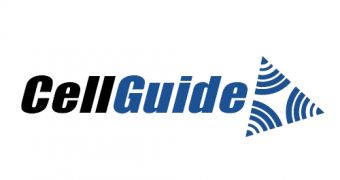Global Positioning Systems have landed inside pretty much every type of electronic that can be carried around, so CellGuide decided to push the technology a bit further with the CLIOX-C.
The CLIOX-C is the newest GPS product made by CellGuide, though it is a fair bit more than just another GPS chip.
While its primary purpose is unchanged, it has an extra asset, namely the Baolab 3D NanoCompress IC (integrated circuit).
This makes it, according to the press release, the world's first fully integrated GPS and compass device, capable of integrating 'point and identify' augmented reality features into cameras, tablets and mobile devices easily.
"NanoEMS now makes it much easier and more cost effective to integrate MEMS sensors into high volume, consumer electronics products so that they can become pervasive, meeting the increasing demand for smarter, more intuitive devices,” said Dave Doyle, Baolab's CEO.
The CLIOX-C GPS is based on the SNAP technology, which has high performance and low power consumption.
The GPS and compass functions can work on their own or simultaneously, as directed by the host device's application processor.
Also, the electronic 3-axis CMOS MEMS NanoCompass technology itself uses the NanoEMS technology and, with it, reduces the cost of the compass by up to two thirds.
The reason behind this is how, within the standard metal structure of a CMOS wafer, standard high volume CMOS lines can be used for the creation of nanoscale MEMS (Micro Electro Mechanical Systems).
"Baolab's 3D NanoCompass extends the capabilities of our GPS product so that it can cope with challenging situations and still continue to deliver reliable positional information," said Adina Shorr, CellGuide's CEO.
"Baolab's technology enables its NanoCompass IC to be integrated with our product in a very cost effective manner to create a unique solution that gives an extra level of detail to location services of not only where you are but also your orientation. The integration of the two technologies enhances the user experience, so for example you would know whether to turn left or right when coming out of an underground parking lot whilst the GPS is still trying to pick up the satellites."

 14 DAY TRIAL //
14 DAY TRIAL //